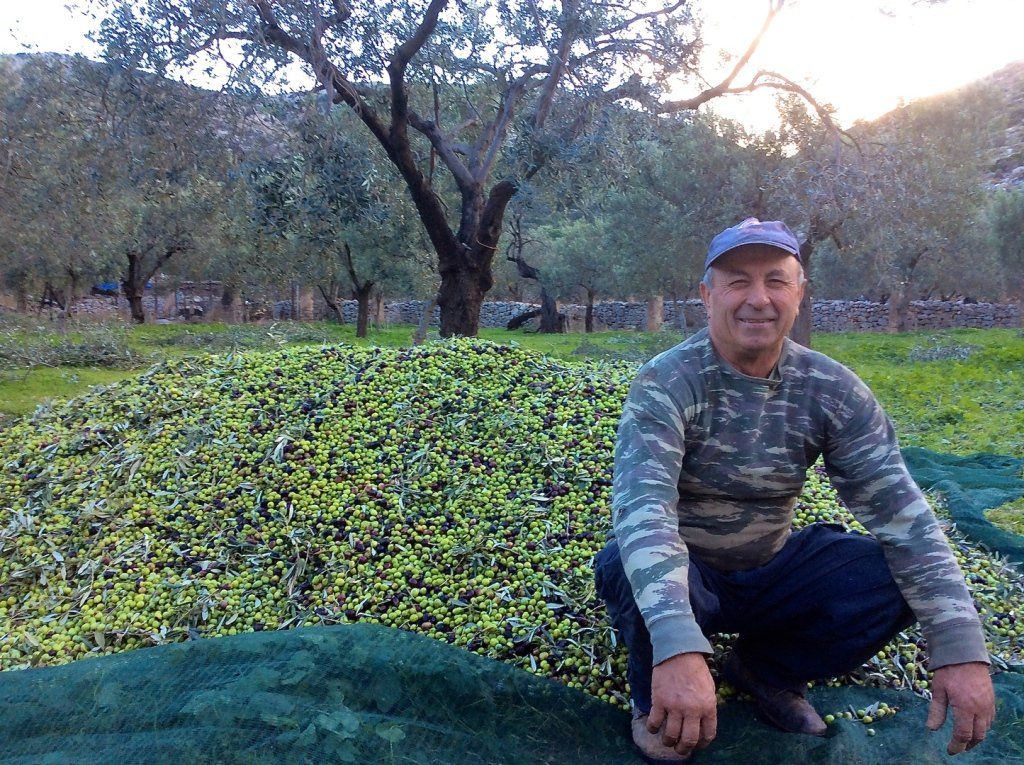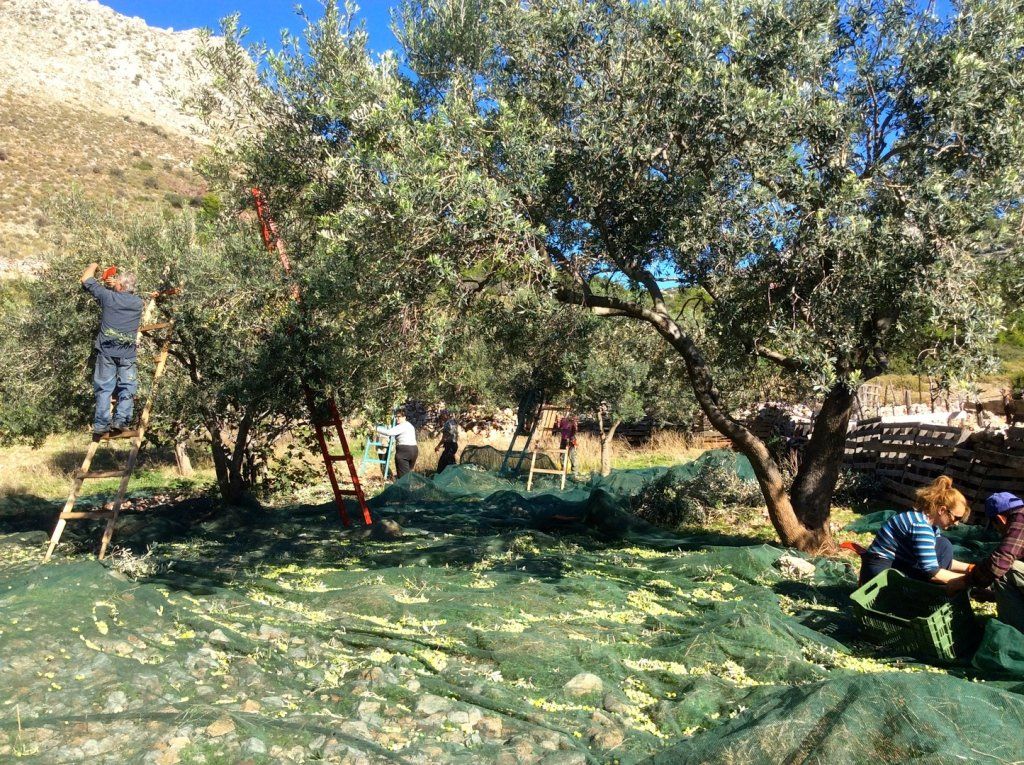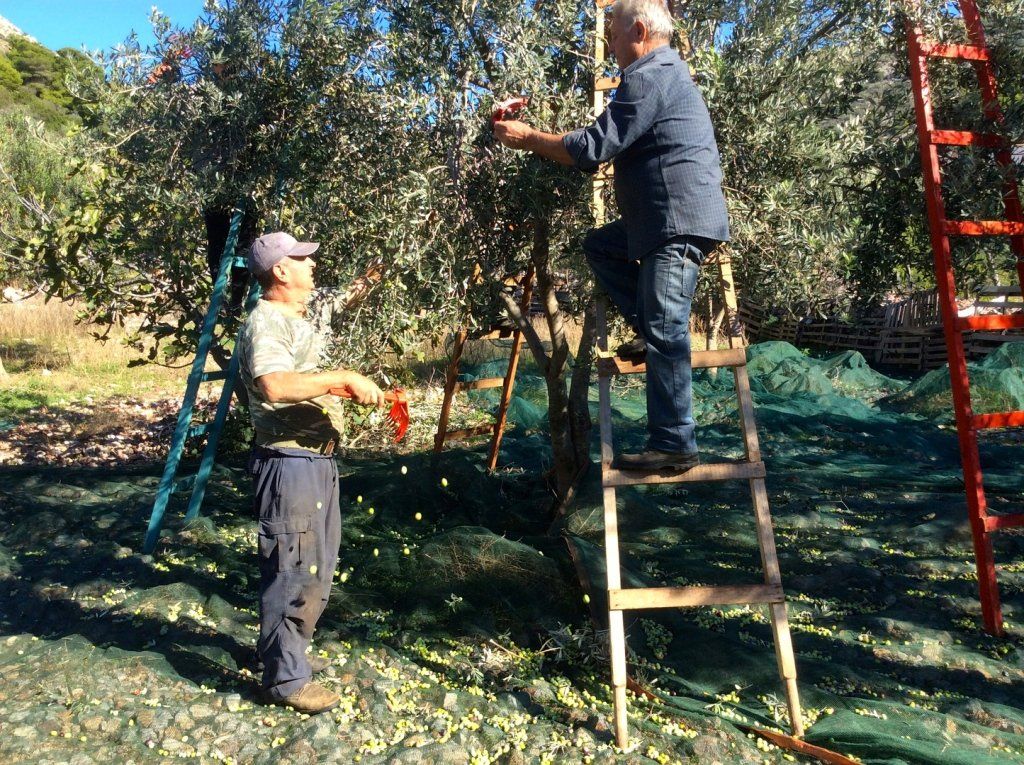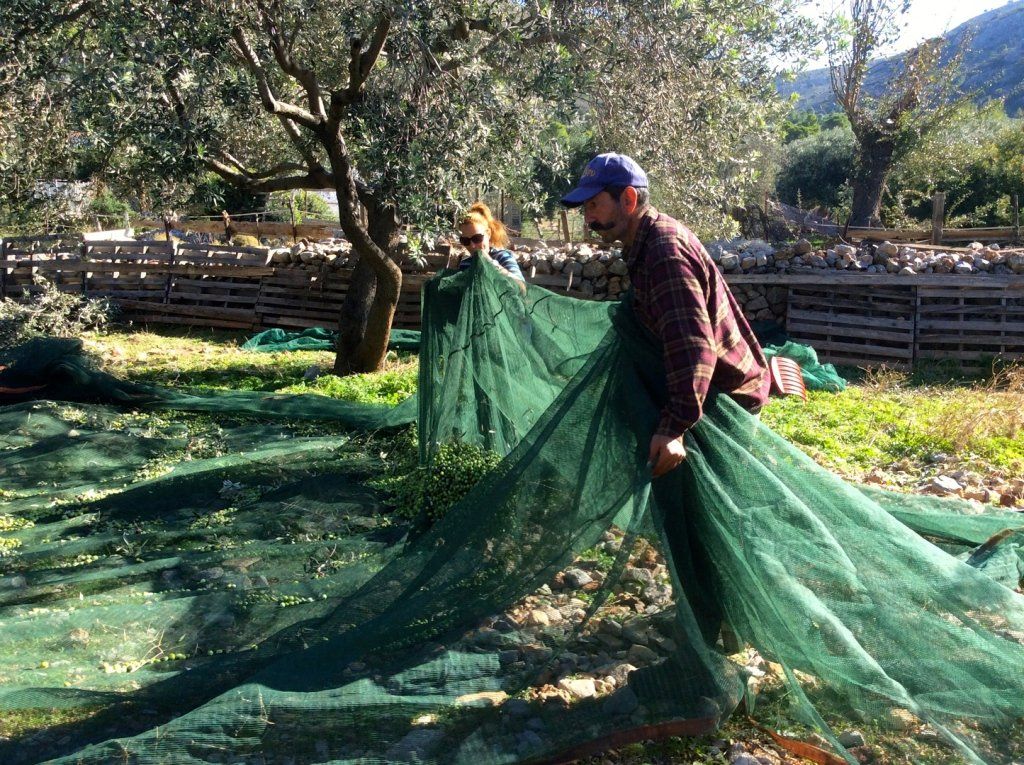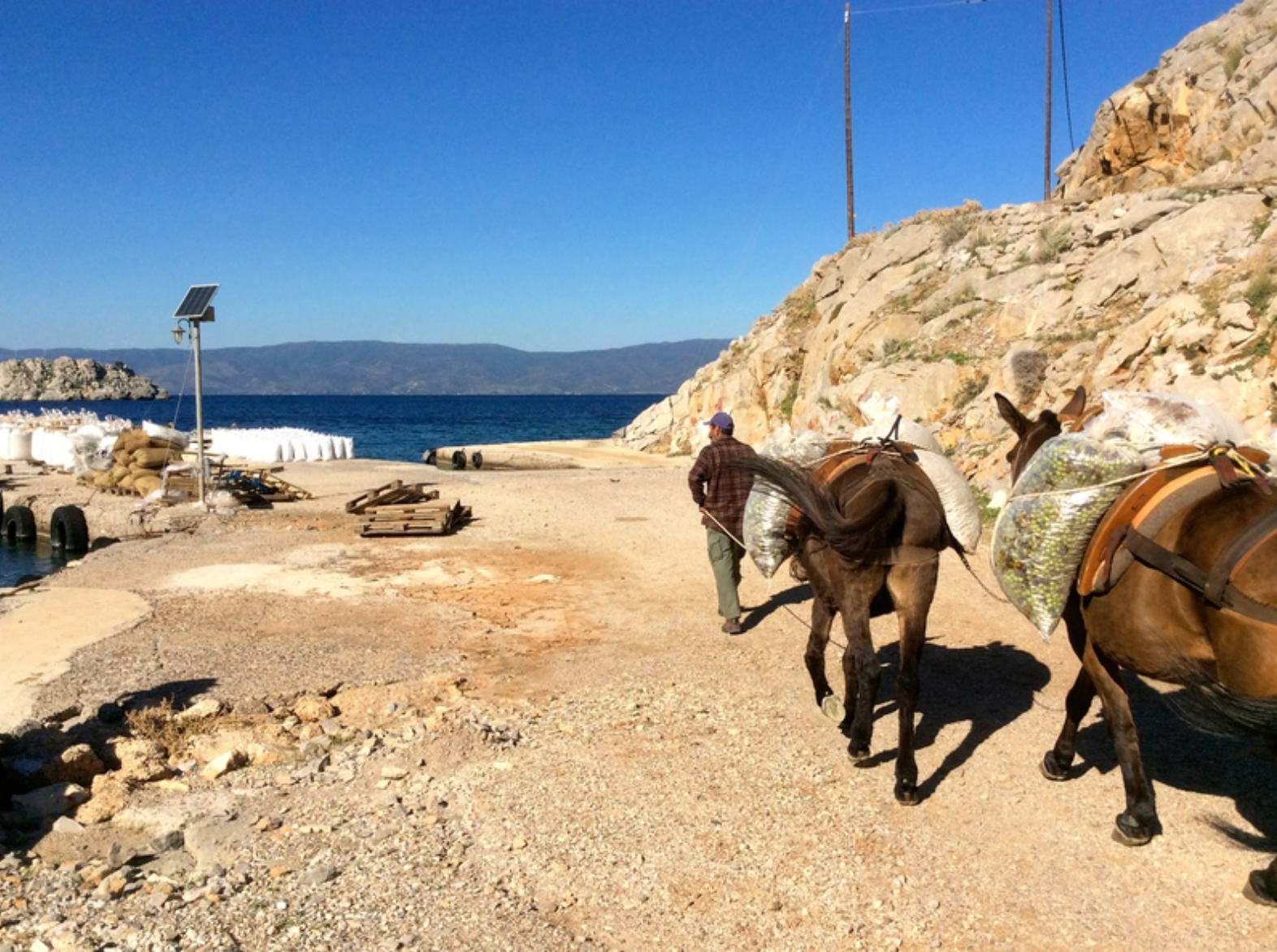Olive Production on Hydra Island
The gentle, pastoral scene worthy of an Old Masters' painting, belies the reality: it's an intensive, completely manual, hard-labour process against the clock. You don't pick olives when you have an estate of two thousand olive trees. You rake them off!
Generations of the Voulgaris family, have lived in their rambling farmhouse to the side of the Palamitha Bay, working their land and providing Hydra Island with a safe haven for all the little boats and sea taxis to be dry-docked, repaired and stored over winter.
Foremost, the Voulgaris are farmers. They have the most immaculately maintained kitchen garden I've ever seen and their free-range chickens are noisily busy in a huge field-sized pen with coops that are amusingly made out of boat wheel-cabins. The majority of their land is planted with over two thousand, well-established olive trees and this year has produced a bumper crop. Weather conditions have been perfect for olive growing, the unexpected, fantastic, late autumn sunshine has extended the picking window and the tiny insects that often 'spoil' the olives, haven't done as much damage as usual.
The current manager of the family business is Stamatis who, along with a small group of friends and relations, is responsible for collecting all the olives and getting them to the press in Ermioni, on the mainland.
The rocky, ankle-turning ground beneath the olive tree to be worked on is covered with huge, sturdy nets. Tapering, wooden ladders are wedged against the branches and then the team swarm up them brandishing their red, hand-rakes to attack the tree with all the enthusiasm of starving locust!
Precariously perched at the top of each ladder, which wallowed about as though at sea, the picker's unenviable task was to grab each flimsy, olive-laden branch and brush it with a downward stroke of their rake creating a storm of pinging missiles that tumbled and bounced in every direction - hence the requirement for very large nets.
Stamatis called, 'Put the camera down, grab a rake and get up that ladder'. Right, like that was going to happen. It was dangerous enough tiptoeing over the nets without tripping and trying to crouch under the tree to get action shots while being bombarded with a hail of bullet strength olives. Not a chance I was going to risk my neck teetering up a tree that didn't look strong enough to support a sparrow, in spite of the evidence to the contrary!
A tree took about twenty minutes to strip and once cleared was given a light pruning by Stamati while the team laid out more nets to tackle the next one.
Cleared of ladders and feet, the full nets were gathered up until the glistening, heap of black and green olives could be picked over and transferred into crates. Eventually the olives are sacked and piled on the dock ready to be loaded onto the boat to be taken to the mainland for pressing. (As an aside: you get black and green olives off the same tree, it's just a case of the black ones being riper than the green.)
At the time of writing, (4, Nov. 2015) the harvest was only half way through. I am looking forward to following the olives to Ermioni to see them pressed and will report back with just how many tonnes of olives were in the final tally.


